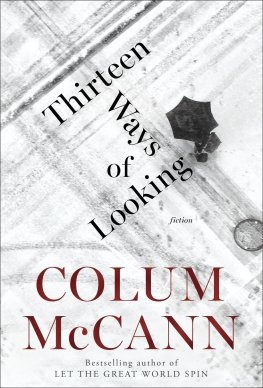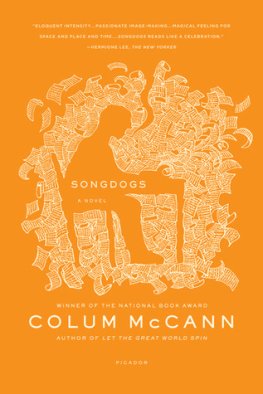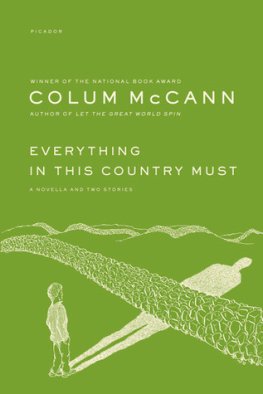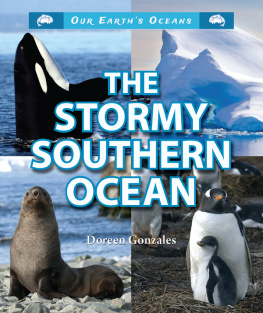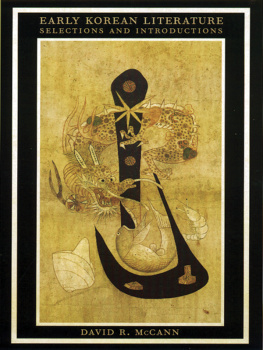Joy McCann - Wild Sea: A History of the Southern Ocean
Here you can read online Joy McCann - Wild Sea: A History of the Southern Ocean full text of the book (entire story) in english for free. Download pdf and epub, get meaning, cover and reviews about this ebook. year: 2018, publisher: University of Chicago Press, genre: History. Description of the work, (preface) as well as reviews are available. Best literature library LitArk.com created for fans of good reading and offers a wide selection of genres:
Romance novel
Science fiction
Adventure
Detective
Science
History
Home and family
Prose
Art
Politics
Computer
Non-fiction
Religion
Business
Children
Humor
Choose a favorite category and find really read worthwhile books. Enjoy immersion in the world of imagination, feel the emotions of the characters or learn something new for yourself, make an fascinating discovery.

- Book:Wild Sea: A History of the Southern Ocean
- Author:
- Publisher:University of Chicago Press
- Genre:
- Year:2018
- Rating:5 / 5
- Favourites:Add to favourites
- Your mark:
- 100
- 1
- 2
- 3
- 4
- 5
Wild Sea: A History of the Southern Ocean: summary, description and annotation
We offer to read an annotation, description, summary or preface (depends on what the author of the book "Wild Sea: A History of the Southern Ocean" wrote himself). If you haven't found the necessary information about the book — write in the comments, we will try to find it.
Wild Sea: A History of the Southern Ocean — read online for free the complete book (whole text) full work
Below is the text of the book, divided by pages. System saving the place of the last page read, allows you to conveniently read the book "Wild Sea: A History of the Southern Ocean" online for free, without having to search again every time where you left off. Put a bookmark, and you can go to the page where you finished reading at any time.
Font size:
Interval:
Bookmark:

For my family
WILD SEA
A HISTORY OF THE SOUTHERN OCEAN
JOY MCCANN
THE UNIVERSITY OF CHICAGO PRESS
CHICAGO AND LONDON
The University of Chicago Press, Chicago 60637
The University of Chicago Press, Ltd., London
2018 Joy McCann
All rights reserved. No part of this book may be used or reproduced in any manner whatsoever without written permission, except in the case of brief quotations in critical articles and reviews. For more information, contact the University of Chicago Press, 1427 E. 60th St., Chicago, IL 60637.
Published 2019
Printed in the United States of America
28 27 26 25 24 23 22 21 20 19 1 2 3 4 5
ISBN-13: 978-0-226-62238-5 (cloth)
ISBN-13: 978-0-226-62241-5 (e-book)
DOI: https://doi.org/10.7208/chicago/9780226622415.001.0001
An earlier version of the work was first published in Australia by NewSouth, an imprint of UNSW Press Ltd., 2018.
LIBRARY OF CONGRESS CATALOGING-IN-PUBLICATION DATA
Names: McCann, Joy, 1954 author.
Title: Wild sea : a history of the Southern Ocean / Joy McCann.
Description: Chicago ; London : The University of Chicago Press, 2019. | An earlier version of this work was first published in Australia by NewSouth, an imprint of UNSW Press Ltd., 2018.Title page verso. | Includes bibliographical references and index.
Identifiers: LCCN 2018043684 | ISBN 9780226622385 (cloth : alk. paper) | ISBN 9780226622415 (ebook)
Subjects: LCSH: Antarctic Ocean. | Antarctic OceanDiscovery and exploration.
Classification: LCC GC461 .M33 2019 | DDC 910.9167dc23
LC record available at https://lccn.loc.gov/2018043684
 This paper meets the requirements of ANSI/NISO Z39.48-1992 (Permanence of Paper).
This paper meets the requirements of ANSI/NISO Z39.48-1992 (Permanence of Paper).
CONTENTS
MAPS
The Southern Ocean surrounds Antarctica, but its northern limits have eluded precise definition and remain contested

PRELUDE
It is not possible to measure the full extent of that sea except with the eye of fantasy. No one will ever delve to the bottom of that sea except by plunging into the waves of his wildest dreams.
Muammad Rab ibn Muammad Ibrhm, The Ship of Sulaimn, 1685
The Southern Ocean is a wild and elusive place, an ocean like no other. With its waters lying between the Antarctic continent and the southern coastlines of Australia, New Zealand, South America and South Africa, it is the most remote and inaccessible part of the planetary ocean, the only part that flows completely around Earth unimpeded by any landmass. It is notorious amongst sailors for its tempestuous winds and hazardous fog and ice. Yet it is a difficult ocean to pin down. Its southern boundary, defined by the icy continent of Antarctica, is constantly moving in a seasonal dance of freeze and thaw. To the north, with no continental landmasses to interrupt their flow, its waters meet and mingle with those of the Atlantic, Indian and Pacific oceans along a fluid boundary that defies the neat lines of a cartographer. Even the oceans name is uncertain; it has been known by many: Antarctic Ocean, Antarctic Circumpolar Ocean, Great Southern Ocean, Southern Icy Ocean, Grand Ocean, South Polar Ocean, Austral Ocean and simply the South Atlantic, South Indian and South Pacific oceans. I have chosen to use Southern Ocean in the following pages, based on the common acceptance of the term in the Southern Hemisphere.
My earliest memories are of the Southern Ocean. I remember learning to swim in its shallows on the South Australian coast near Adelaide during the 1960s, imagining that the huge waves that crashed onto the long white beaches had travelled all the way from Antarctica. I would strain my eyes to the horizon, picturing floating ice on those sweltering Adelaide summer days. I was never much of a swimmer, but the Southern Ocean always held a peculiar fascination for me. My family had crossed that ocean to Australia on an ageing migrant ship. Much later, as a historian interested in Australian landscapes and environments, I made the unsettling discovery that those responsible for defining the boundaries of oceans and seas had erased the Southern Ocean from world maps sometime before I was born. It seems that no one thought to tell the good people of Adelaide, since its waters still surged onto their local beaches, bringing gleaming ribbons of kelp and other riches from its depths. I was intrigued, and so began my own journey into that wild ocean. In the following pages I continue that voyage, navigating back and forth not only across the physical ocean but also through its history, and through humankinds shifting political, scientific and cultural relationships with it.
In Western cultures people have found a myriad of ways to create meaning and order in the oceanic realm. Atlantic (from the Greek Atlantikos, referring to Atlas, the Titan of Greek mythology)
When European explorers navigated their way into the uncharted waters of the high southern latitudes in the eighteenth century in search of new territory, resources and geographical knowledge, they encountered vast barriers of sea ice and strange winds and currents. Such early expeditions were motivated by the prospect of finding new trade routes. The British navigator James Cook was instructed by the British Admiralty to undertake three voyages of exploration to the region. He did so between 1768 and 1779, first to the Pacific Ocean to observe the transit of Venus and search for a continent thought to lie across the South Pacific below latitude 40 South. On his second voyage he crossed the Antarctic Circle for the first time but saw only ice.
Over the following two centuries larger sailing vessels and improved navigation techniques ushered in a new era of long-distance voyaging to the Southern Hemisphere. The ocean at the southernmost end of Earth began to take shape on nautical maps and charts, but sailing over such vast distances was not for the faint-hearted and shipwrecks were common. The idea of a Great Southern Land persisted until mariners venturing into the high southern latitudes mapped two great lands of desert and ice separated by a stormy, tempestuous ocean. Along the way they found rich whaling grounds in the Antarctic Circumpolar Current, where the southern whales migrated along ancestral pathways.
The prospect of a new frontier at the South Pole fuelled epic voyages of science and exploration, and nations sought to impose order on the wild ocean that surrounded it by mapping its surface features and condensing the ceaseless motions of current and wind and ice into lines on charts. Maritime explorers, natural philosophers and scientists also sought to unravel the Southern Oceans mysteries. Living organisms were captured and preserved in the archives of natural history museums, the artworks of galleries and the records of research institutions. A combination of developments in undersea surveillance technology after World War II, which made new tools and methods available to the oceanographic and biological sciences, together with the decline of whaling and rise of a new ecological consciousness opened windows to the deep sea and created the conditions for the transformation of the stormy moat encircling Antarctica into a global field laboratory. Scientists examined the interplay of ocean and atmosphere, Earths two great bodies of water. Satellite and sonar technologies plotted more accurately the shifting contours of current and air and mapped the invisible pathways linking this polar region to the rest of the planet. Over the centuries, each voyage, each chart, each satellite image added another fragment to Western knowledge, a process that continues to this day.
Font size:
Interval:
Bookmark:
Similar books «Wild Sea: A History of the Southern Ocean»
Look at similar books to Wild Sea: A History of the Southern Ocean. We have selected literature similar in name and meaning in the hope of providing readers with more options to find new, interesting, not yet read works.
Discussion, reviews of the book Wild Sea: A History of the Southern Ocean and just readers' own opinions. Leave your comments, write what you think about the work, its meaning or the main characters. Specify what exactly you liked and what you didn't like, and why you think so.

